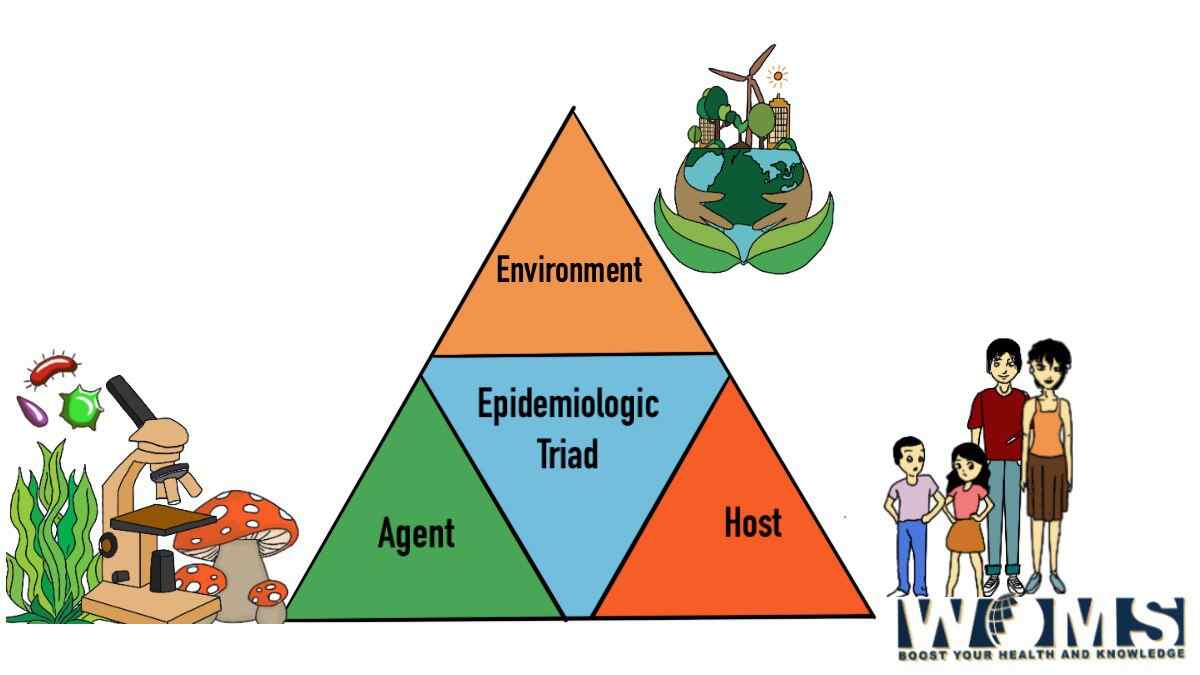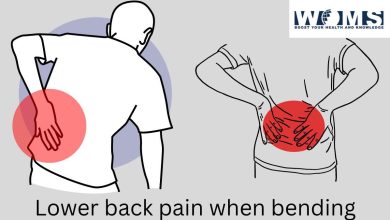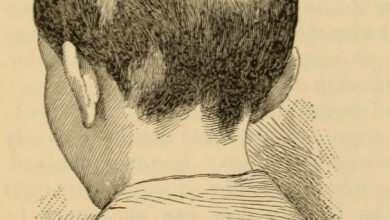Epidemiological Triad: What is it?

Epidemiology is the branch of medicine that includes the study of the distribution, incidence, and determinants of health-related events in a specific population.
This term defines that disease and health events occur in defined members, not randomly in a population. The epidemiological triad is one of the simplest models for disease causation.
This triad comprises three factors named as:
- Susceptible host
- External agent
- Environment
This model describes that diseases occur due to the interaction between the host and agent in an optimum environment. These three factors correlate with each other in different ways to cause disease. The study of the host, agent, and environment can help control any disease in the population.
Breakage of the correlation between host, agent, and environment can help to prevent further transmission of the disease in the population. Therefore, it is important to study all these three factors to analyze the transmission of the disease in any population. Let us explain all these factors in detail for better understanding.
Agent:
An agent is any external microbe or pathogen that can cause infection in the host. Agents usually interact with other factors to cause disease in an organism. There are several factors, including organism immunity and agent quantity, that interact with agents to cause any infection.
Host:
Host term refers to the organism or humans that usually get the disease after the entry of an agent. There are several risk factors that are intrinsic agents to the host. These risk factors increase the incidence of agent exposure, susceptibility, and response to the external agent.
Hygiene practice and social and sexual behaviour affect the exposure of the human to the causative agent. Host susceptibility and response to agent increases due to the genetic, immunologic, and psychological makeup of the organism.
Environment:
The environment is an extrinsic factor that affects the agent and exposure opportunity. It includes climate changes and biological changes that can affect the transmission of various diseases. There are various socio-economic factors, like crowding, sanitation, and the availability of health services that can affect disease transmission.
What are the objectives of the epidemiological triad?
There are several objectives of the epidemiological triad to understand the transmission pattern of any disease. Some of the objectives are as follows:
- The epidemiological triad helps to identify the etiology or major cause of any disease.
- It helps to determine the final limits of any disease.
- Moreover, it helps to assess preventive and therapeutic measures for any health-related event.
- In addition, it helps to study the progression of any disease in the population.
- The epidemiological triad helps to develop public health policies to prevent the transmission of diseases.
- It promotes public health by evaluating the effectiveness of various interventions to prevent and control various diseases.
What is the role of an epidemiologist?
There is a chance of epidemic or outbreak if there are more cases than expected of a particular disease in any area. There may be an endemic of any disease in a population. The main role of an epidemiologist is very specific in such situations.
It is necessary for an epidemiologist to break at least one connection between the host, agent, and environment. In this way, the connection between them will be lost. Therefore, it will help to stop the progression of diseases. You can also read a detailed article on Portal Triad.
Example of the epidemiological triad:
The CDC evaluates that every year, more than 480,000 people die from smoking-related health events. Life expectancy becomes shorter for the people who smoke. Smoking-related health problems are the preventable cause of death in the US. Anti-smoking efforts play the main role in declining the death rate from smoking.
Agent – What?
In this case, cigarettes or any other form of tobacco are the main agents of smoking-related illness. Smoking is not contagious among the public. But the smoke from cigarettes can be transmitted from one person to another. Carcinogens in the smoke of a cigarette is an agent.
Host – Who?
People are the potential host of smoking-related diseases when they smoke cigarettes or inhale the smoke of tobacco. A host can suffer from various diseases due to the toxins present in cigarettes. It may cause a variety of lung, heart, liver, and several other diseases.
Environment – where?
Pressure from relatives or friends and various marketing ads are the major factors that can lead to an increased smoking ratio in public. Moreover, the frequency and duration of smoking also influence the incidence of smoking-related diseases. These tobacco products are usually addictive and people continue to smoke. All these factors play a main role in the progression of smoking-related diseases.
What are the limitations of the epidemiological triad:
The epidemiological triad helps to identify the cause of various infectious diseases. In addition, it helps to prevent the outbreak of any epidemic or endemic in any population. Moreover, it helps to prevent the progression of any infectious disease in the population.
Besides these, the epidemiological triad is not sufficient for various infectious diseases. In addition, it also does not help to understand the etiology of such diseases that are multifactorial. The epidemiological triad doesn’t help to identify the etiology of cardiovascular diseases, cancer, and many other diseases that may have multifactorial causes.
Also read: Charcot’s Triad
Conclusion:
The epidemiological triad consists of three major factors that niter-connect each other to spread diseases in a population. These factors host, agent, and environment affect the population in a variety of ways. Therefore, it is necessary to break any connection between them to prevent the transmission of diseases.
An epidemiological triad is helpful to prevent the transmission of any disease in the population. This triad also helps to identify the cause of various diseases.
Frequently asked questions(FAQs):
How do we break any connection in the epidemiological triad?
Maintain proper oral and hand hygiene to spread any disease.
Wear personal protective equipment before treating any patient
Kill germs by disinfection from the high touch surfaces regularly to break the chain.
Clean and disinfect the common areas.
How do the epidemiological triad factors interact to cause disease?
Diseases occur when an agent interacts with the right host under optimum environmental conditions. These factors form a disease triangle in combination.




